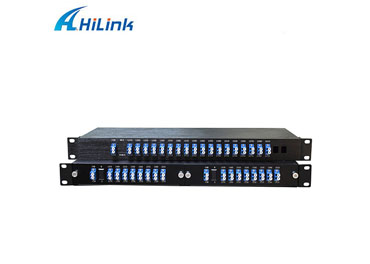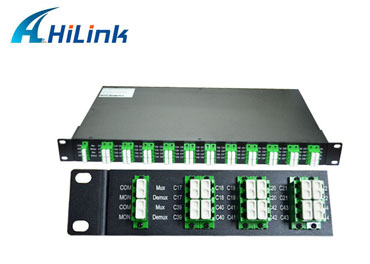CWDM or DWDM: Which Should You Choose Use And When?
Aug. 10, 2022
While both types of WDM - CWDM and DWDM - are effective ways to address the growing demand for bandwidth capacity, they are designed to address different network challenges. Coarse Wavelength Division Multiplexing (CWDM) and Dense Wavelength Division Multiplexing (DWDM) are the two main technologies developed based on Wavelength Division Multiplexing (WDM), but with different wavelength patterns and applications.
Both CWDM and DWDM are effective ways to address the growing demand for bandwidth capacity and to maximise the use of existing and new fibre assets, but the two technologies differ in many ways. To best understand how to decide which of these two WDM technologies might be the best choice when planning a network, it is important to have a basic understanding of how each technology works and how they differ.
Continuous Wavelength Division Multiplexing
CWDM systems typically support eight wavelengths per fibre and are designed for short-range communications, using a wide range of frequencies with wavelengths spread far and wide. Typically, CWDM is used for low cost, low capacity (below 10G) and shorter distance applications where cost is an important factor.
Recently, CWDM and DWDM components have become reasonably comparable in price. CWDM wavelengths are currently capable of carrying up to 10 Gigabit Ethernet and 16G Fibre Channel, and there is little likelihood that this capacity will increase further in the future.
CWDM MUX DEMUX MODULE
Hilink CWDM Mux/Demux Module over a single or duplex single-mode fiber is quite common to extend your overall bandwidth. It offers high stability and reliability and has a small package size. Its operating wavelength is from 1270nm to 1610nm(1271nm-1611nm) which totally offer 18 channels with 20nm channel spacing.
Wavelength Division Multiplexing
Today's DWDM systems typically support 96 channels spaced at 0.8 nm within the 1550 nm C-band spectrum. DWDM systems can therefore transmit large amounts of data over a single fibre link, as they allow more wavelengths to be packed onto the same fibre.
DWDM is best suited for long-haul communications of up to 120 km and beyond because it can cost-effectively amplify the entire 1550 nm or C-band spectrum commonly used in DWDM applications using optical amplifiers. This overcomes long spans of attenuation or distance and, driven by erbium-doped fibre amplifiers (EDFA), DWDM systems are able to transmit large amounts of data over long distances of up to hundreds or thousands of kilometres.
DWDM platforms are also capable of handling higher speed protocols, as most suppliers of optical transmission equipment, today typically support 100G or 200G per wavelength, while emerging technologies support 400G and beyond.
Hilink 100GHz C Band DWDM AAWG (Athermal Arrayed Waveguide Grating) Mux/Demux Module offers high stable and reliable bandwidth in a cost-effective and small package. It's used with 10G 80km DWDM SFP+ Transceiver for Long-Haul transportation.
AAWG 40CH DWDM MUX DEMUX
CWDM or DWDM: which should you use?
CWDM is a flexible technology that can be deployed to extend the capacity of a fibre optic network. It is a compact, cost-effective technology option when spectral efficiency or the need to span long distances of up to 80 km are not critical requirements.
CWDM solutions typically use passive hardware components and are often deployed in point-to-point topologies in enterprise and telecom access networks. DWDM technology, on the other hand, is an ideal solution for networks that require higher speeds, greater channel capacity or for applications that need the ability to transmit data over long distances using amplifiers.
Typically, DWDM systems utilise active hardware components, often deployed as integrated hardware platforms such as ROADMs (Reconfigurable Optical Division Multiplexers), to provide enhanced operational capabilities and support the creation of complex and scalable optical networks.
Because DWDM can handle so much data, organisations in many industries are now using it as an integral part of their long-haul, core or metro fibre networks.
DWDM technology is also used to interconnect data centres, such as the ODCI (Optical Data Centre Interconnect) platform, which provides ultra-high bandwidth links (400G and above) using low-cost per-bit hardware optimised for data centre environments.
If you want to get more information about the DWDM wavelengths and CWDM wavelengths, welcome to contact us today or request a quote.













